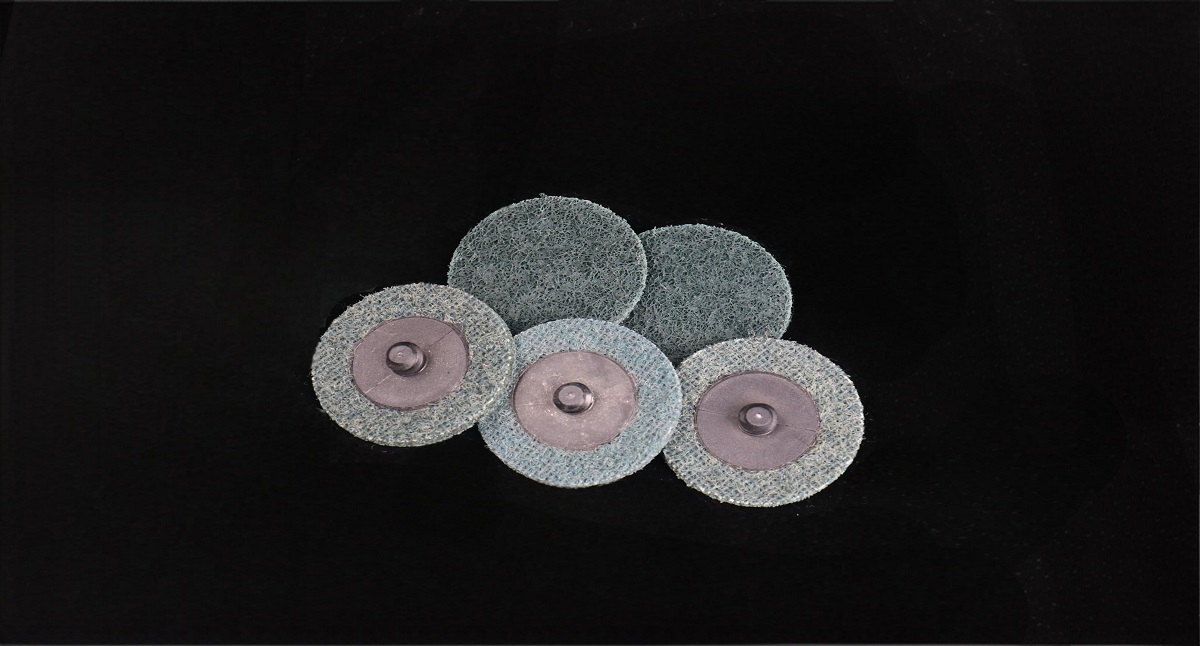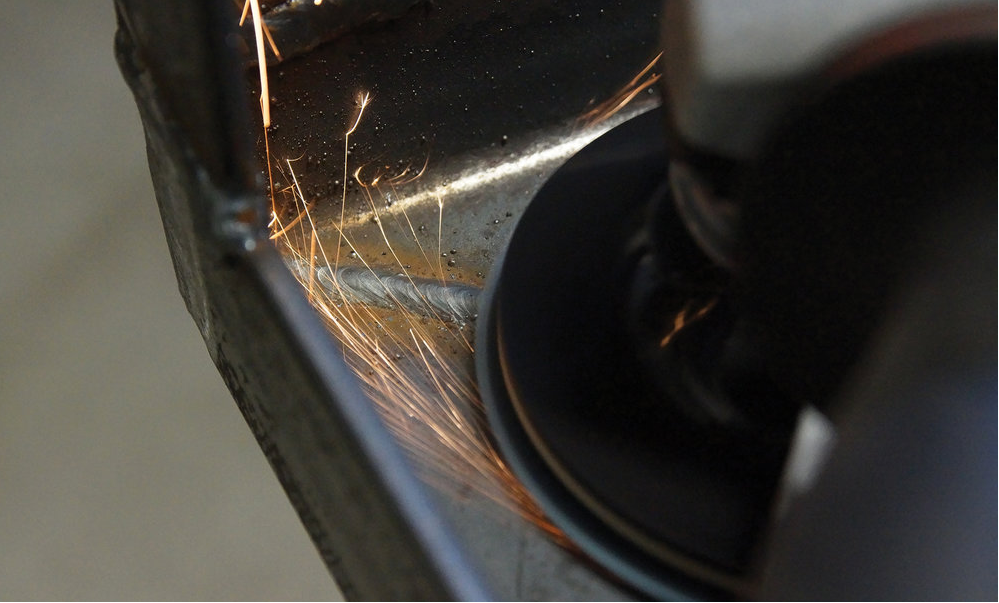In the world of abrasive tools, quick change sanding discs stand out due to their efficiency and ease of use. These discs are designed for fast, tool-free attachment and removal, making them highly beneficial in industries that require frequent disc changes, such as metalworking, woodworking, and automotive repair. They offer excellent versatility, allowing users to switch between grits and materials quickly, saving time and improving productivity. In this article, we will explore the various types of quick change sanding discs, their applications, and how to select the best one for your needs.
What Are Quick Change Sanding Discs?
Quick change sanding discs are a type of abrasive product that utilizes a special attachment system to mount the disc securely on the tool. The main feature that sets them apart from traditional sanding discs is their unique attachment system, typically a twist-lock or hook-and-loop mechanism. This allows users to quickly switch between different abrasive discs without the need for tools, which is crucial in time-sensitive operations.
The most common quick change systems include:
- Roloc (Twist-Lock): This system uses a simple twisting motion to lock the disc in place. It is one of the most popular quick change mechanisms, known for its reliability and ease of use.
- Hook-and-Loop (Velcro): This attachment system uses tiny hooks and loops to attach the disc to the backing pad. It’s ideal for softer abrasive applications, offering flexibility and ease of replacement.
- Speed-Lok/Speed-Change: This system, similar to Roloc, provides a quick attachment and detachment system using a small, threaded hub that screws into the backing pad.
Types of Quick Change Sanding Discs
Quick change sanding discs come in a variety of shapes, sizes, and abrasive materials to suit different tasks. The following sections will cover the most common types of quick change sanding discs and their specific applications.
1. Aluminum Oxide Quick Change Sanding Discs
Aluminum oxide is one of the most commonly used abrasive materials for quick change sanding discs. Known for its durability and versatility, aluminum oxide is ideal for a wide range of applications, including sanding, grinding, and finishing.
Key Features:
- Durability: The self-sharpening nature of aluminum oxide prolongs the lifespan of the disc.
- Versatility: Suitable for working on metals, wood, plastics, and composites.
- Cost-effective: Typically less expensive than other abrasives, making it a popular choice for general-purpose sanding.
Best Applications:
- Metalworking: Aluminum oxide discs are often used to remove rust, clean welds, and grind down metal surfaces.
- Woodworking: These discs are ideal for smoothing rough surfaces and preparing wood for finishing.
2. Zirconia Alumina Quick Change Sanding Discs
Zirconia alumina is a more robust abrasive than aluminum oxide, making it perfect for heavy-duty applications. Zirconia alumina discs are designed to stay sharp for longer periods, allowing them to handle more aggressive sanding and grinding.
Key Features:
- Self-sharpening: Like aluminum oxide, zirconia alumina is a self-sharpening material, which helps maintain cutting performance over time.
- Heat resistance: Excellent heat resistance makes it ideal for high-speed applications.
- Durability: Zirconia alumina discs last longer than aluminum oxide discs, especially in tough conditions.
Best Applications:
- Metal fabrication: Zirconia alumina discs are perfect for removing welds, deburring edges, and surface grinding.
- Stainless steel: The toughness and durability of zirconia make it ideal for grinding and polishing stainless steel.
3. Ceramic Quick Change Sanding Discs
Ceramic abrasives are among the most advanced and hardest materials used in sanding discs. These discs are designed for high-performance applications and are especially effective in aggressive sanding or grinding on tough materials.
Key Features:
- Exceptional durability: Ceramic discs have an extremely long lifespan, even under heavy use.
- Cool cutting: Ceramic abrasives produce less heat during operation, which prevents overheating and material discoloration.
- High performance: These discs provide superior material removal and are excellent for demanding applications.
Best Applications:
- Heavy-duty metalworking: Ceramic discs are perfect for grinding hard metals like stainless steel and titanium.
- Aerospace and automotive industries: Ceramic abrasives are widely used for their precision and efficiency when working on advanced materials.
4. Silicon Carbide Quick Change Sanding Discs
Silicon carbide is a sharp and hard abrasive material known for its rapid material removal capabilities. It is ideal for applications that require precision and minimal heat buildup.
Key Features:
- Sharp cutting edge: Silicon carbide discs have an aggressive cutting action, making them ideal for sanding hard materials.
- Brittle material: Although sharp, silicon carbide is brittle and wears down faster than other abrasives like zirconia or ceramic.
- Smooth finish: Produces a smooth surface finish, making it great for finishing applications.
Best Applications:
- Glass, stone, and ceramics: Silicon carbide discs are commonly used for grinding and polishing glass, stone, and ceramic surfaces.
- Auto body work: Silicon carbide is ideal for sanding paint, primers, and finishes on automotive bodies.
5. Non-Woven Quick Change Sanding Discs
Non-woven abrasives are made from a web of fibers coated with abrasive grains, which gives these discs a unique texture and flexibility. They are designed for surface conditioning, polishing, and finishing, rather than aggressive material removal.
Key Features:
- Flexible: The non-woven structure allows the disc to conform to irregular surfaces, providing a consistent finish.
- Low heat: Generates less heat, reducing the risk of burning or damaging the workpiece.
- Long life: Non-woven discs have a long lifespan due to their resilience and ability to resist clogging.
Best Applications:
- Surface conditioning: Non-woven discs are perfect for cleaning, polishing, and finishing surfaces without removing too much material.
- Rust removal: Ideal for removing light rust, paint, and surface contaminants.
6. Diamond Quick Change Sanding Discs
Diamond abrasives are the hardest and most durable type of sanding discs. These are primarily used for applications involving very hard materials, such as stone, concrete, and some metals.
Key Features:
- High precision: Diamond discs provide exceptional precision, making them ideal for intricate work.
- Extreme durability: Due to the hardness of diamonds, these discs last significantly longer than any other abrasive.
- Heat resistance: Diamond abrasives can withstand high temperatures without losing performance.
Best Applications:
- Concrete and masonry: Diamond discs are widely used for grinding and polishing concrete, stone, and masonry surfaces.
- Hard metals: These discs are also suitable for working with hard metals like tungsten carbide.
Choosing the Right Quick Change Sanding Disc
Selecting the right quick change sanding disc depends on several factors, including the material you’re working on, the desired finish, and the type of work being done. Here are a few tips to help you choose the best disc for your needs:
- Consider the Material: Different materials require different abrasives. For example, zirconia alumina or ceramic discs are better suited for metalworking, while silicon carbide is ideal for sanding glass or stone.
- Determine the Grit Size: Grit size affects how much material the disc removes. Coarse grits (40-60) are best for aggressive material removal, while finer grits (120-240) are better for finishing and polishing.
- Understand the Application: Consider the type of work you’re doing. For heavy-duty grinding, choose a tough abrasive like zirconia or ceramic. For polishing and finishing, non-woven or finer-grit aluminum oxide discs might be more appropriate.
- Evaluate Heat Sensitivity: If you’re working on heat-sensitive materials, opt for abrasives like ceramic or diamond, which reduce heat buildup.
Conclusion
Quick change sanding discs offer significant advantages over traditional sanding discs, including faster disc changes, increased efficiency, and versatility across different applications. Whether you’re working with wood, metal, stone, or other materials, there’s a quick change disc designed to meet your needs. Understanding the various types of discs, such as aluminum oxide, zirconia alumina, ceramic, silicon carbide, non-woven, and diamond, allows you to make an informed decision based on your project’s requirements. Choose the right disc, and you’ll enhance your productivity and achieve optimal results in your sanding and grinding tasks.


